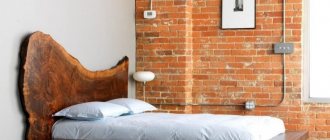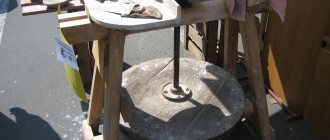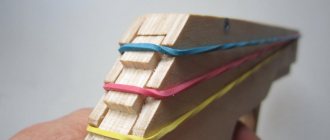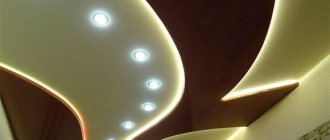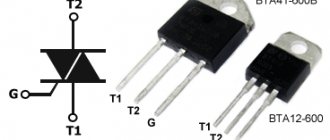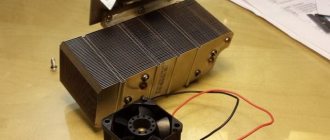Making homemade furniture is not an easy task, however, it is the skill of building interior items from nothing that will allow you to create a unique atmosphere in your own nest.
Indeed, taking care of the home is not only about preparing food and filling the interior with comfortable little things, but also about harmoniously arranging the furniture used. In addition, the ability to assemble a table yourself is also very useful if you have a limited budget and your new home is completely empty.
You may be surprised, but it is the creation of small details of interior items that always requires special concentration. Therefore, let's talk about how to make table legs with your own hands with professional precision.
How to make table legs with your own hands?
Functions of table legs
It would seem what functions table legs can have, because this is simply one of the elements of dining furniture. However, in fact, it is these design details that can affect your comfort level in completely different ways.
Table 1. What functions do table legs have?
| Function | Description |
| Support | Of course, the legs are the support of the structure. It is their quality, strength and proper manufacturing that will determine how stable the table will stand on the floor. They can prevent:
|
| Decorative | Table legs do not have to be simple and smooth; they can become the highlight of the entire interior of the kitchen or dining room. The fact is that the tabletop is often covered with a tablecloth, plus, you can’t go wrong with its design, because it should still be comfortable to eat food on, hold a laptop, etc. |
| Adjustment | Some table legs can adjust the following table position parameters:
|
| Transformative | Thanks to folding legs, a small coffee table can at any time turn into a large dining table, and vice versa. This is very convenient when there are a small number of people living in an apartment who do not constantly need a dining surface. |
| Protective | It is the legs that protect the lower segments of the table from mechanical impact, taking the impact on themselves, thereby minimizing wear on the structure. It is how high quality and strong the legs are that will subsequently determine the durability of the product. |
Table legs are not just a support, but a rather significant detail that determines the overall quality, appearance, service life and functionality of the table.
What types of designs are there?
When thinking about how to make a bar stool, take into account that models are made with or without armrests, with or without a backrest, with upholstery on the seat surface and with hard seats. Stools save space. Furniture ranges from basic wooden structures to more complex, height-adjustable designs.
Swivel and floor models can be moved, but they are unstable. Mounting to the floor makes the furniture immovable. This floor-standing option is usually mounted on a column, and if the chair has legs, it is secured to the floor using metal brackets.
Video:
Bar stools are produced in various styles. Remember! You and only you limit your imagination.
- Most often, wood is used to make it yourself.
- Some bar models use polyurethane foam as a comfortable upholstery.
- Wooden and metal tall models (including stainless steel), height-adjustable, are especially popular.
- Furniture is made from rattan or bamboo, using it to create the effects of the popular retro style of the 1950s and 1960s.
- Some craftsmen use chrome in combination with matching seats.
Types of table legs
Manufacturers of home furniture today can fantasize and embody their creative impulses in the most original interior solutions. Thanks to their endless stream of ideas, there are many different types of table legs available today.
Standard legs
Standard products are, simply put, ordinary stands, not endowed with such specific functions as:
- tilt adjustment;
- height adjustment, etc.
A table with standard legs will fit into any interior
The advantage of traditional type legs is their reliability, since their only purpose is to be a support. Of course, they may not be devoid of decorative design, but increasingly, such supports are implemented in a rather laconic form so that they can fit perfectly into any interior. However, for those who choose these, the affordable cost is clearly more important than the external beauty of the products.
Tables with such legs can be installed not only in the kitchen or dining room, but also in the study, school room, office, living room, etc.
Standard legs don't have to look cheap
Decorative legs
Decorative legs are an integral part of the overall appearance of the table, as well as the interior of the room in which this piece of furniture will be installed. Today there are many tables with such legs, literally for every taste: from classics to original decor.
Decorative legs can become the highlight of the interior
Particularly valued are handmade legs, figured, carved, intricate in shape, having different colors and designs. They are, as a rule, also distinguished by their elegance, and can be attached to tables of any orientation:
- lunch;
- magazine;
- kitchen;
- office;
- children's, etc.
There are an incredible variety of different decor options.
Some people first fall in love with a table with painted legs, then buy it and then build their entire interior around them so that everything fits together.
Folding legs
Tables with such legs are most often installed in the offices of famous companies in order to make the workspace more convenient for those using this piece of furniture.
However, in reality, you can place such an unusual model in any room of the apartment, making the use of the table several times more convenient. This is especially true for modest spaces, in which, in addition to the table, you need to fit at least a few more chairs, cabinets, etc.
Folding legs add functionality to the table
The significant advantages of tables with folding legs are:
- low cost;
- ease of transportation;
- convenience of placement;
- Can be used anywhere.
Of course, if you want to fit a huge family around the table at lunchtime, it’s better not to risk it and take a slightly more sustainable option.
A table with folding legs is a stylish and functional product
Telescopic legs
Telescopic legs allow you to adjust the furniture to the extraordinary requirements of its owner. So, using tables equipped with telescopic legs, you can adjust:
- tabletop height;
- angle of inclination of the structure.
Very often, families with small children prefer to buy such tables, since in literally one movement a spacious dining table can turn into a convenient area for a child to draw.
A simple telescopic table is maximally functional
Often coffee tables are also equipped with such legs in order to give them functionality and make them attractive to those who appreciate the ergonomic distribution of free space in the apartment.
At the same time, the presence of a telescopic mechanism does not mean that the interior of the apartment where the table with such legs is installed must necessarily be futuristic; no, there are options suitable for almost any design.
This telescopic table is appropriate even in a simple interior.
Drawing Model Lines
We mark the modeling lines on the first side; they will be needed for the final formation of the leg. Apply marks with a pencil from the middle of the ankle at the bottom of the workpiece. Hold the pencil at a distance equal to half the thickness of your ankle. Use your middle finger as a depth gauge and draw a line that is parallel to all four edges on the profile. There is no need for precise marking of model lines. Remember that these are just recommendations.
Marking the model lines on the second side is done in the same way as on the first side.
Materials from which table legs are made
So, the legs can be made from various materials, which will also determine the presence of certain characteristics in a given table part. Let's look at these materials and their features.
Metal
The legs, made of metal, are very durable, in addition, their appearance is also very attractive. Installing such parts will ensure your table has a long service life.
A table with forged legs can add a unique charm to a room.
So, the most durable and strong legs are considered to be from:
- gland;
- aluminum
It is these metals that can support even a massive tabletop with serious support.
By the way, these legs look very impressive as an interior detail in almost any direction.
Often, chromium is used for the manufacture of these parts, which is heavy, however, its strength is along with that of aluminum. The appearance of chrome legs is considered especially stylish, so such stands are very actively used to create interiors in high-tech style, for example, as well as loft, techno, etc.
Metal legs do not have to be standard stands. No, they can be given absolutely any shape:
- wheels;
- squares;
- triangles, etc.
High-quality forging creates real works of art
Moreover, it is metal products that usually:
- fold up;
- move apart;
- adjustable to the required parameters.
A table with chrome legs will become the highlight of the interior, despite its apparent simplicity.
These legs are represented by pipes with different diameters, usually about 40 millimeters. The wall thickness of each pipe is usually one and a half millimeters. Inside these metal pipes there are:
- core;
- filler.
The pipes themselves must be painted using various technological methods.
Forged furniture with glass tabletops is very popular today. Such interior items are literally all the rage.
Video - DIY forged table legs
Tree
Also quite often, table supports are made of wood. In this case, of course, legs made entirely from solid wood are especially valued, as they:
- serve for a long time;
- reliable;
- environmentally friendly;
- look expensive and stylish.
Classic table with wooden legs
Sometimes the supports are made of timber, which subsequently may not even be treated with paints, but is only covered with a protective layer of varnish. Such legs become an integral part of the interior of rooms of the following styles:
- Provence;
- rustic;
- country, etc.
Wooden table supports create an indescribable atmosphere of comfort in the house. It doesn’t matter whether you own a modest apartment in the city, or have gone to live in the fresh air outside the metropolis, this detail will fit perfectly into your home.
It is worth noting that wood is a valuable material, therefore, very expensive. Its use as a table body composition significantly increases the price of furniture.
Unusual wooden table
However, for those who definitely want a table with wooden legs, but cannot spend their entire monthly salary on it, the following options have been invented:
- table legs made of inexpensive wood and metal inserts;
- making your own legs, detailed instructions for which we provide below in this article.
Plastic
Plastic legs are a much less reliable option than metal or solid wood, however, they are much cheaper and available to almost everyone.
Another advantage of plastic table supports is their elegance. The fact is that manufacturers usually strive to compensate for the low quality of products with an attractive appearance.
Tables with plastic legs - a super budget option
In addition, since it is quite easy to produce anything from plastic, legs made with it are also usually folded out using telescopic technology or in some other way. Usually tables with such supports are equipped:
- small kitchens;
- terraces, etc.
No one will put such tables in elegant rooms with expensive furnishings, as they will stand out sharply against the background of the rest of the luxury.
Plastic tables are often installed in the garden or terrace
Stone
Another variation of luxury table legs are stone supports. This is a wonderful, environmentally friendly design that will add solidity not only to the kitchen or dining room, but also to your personal office. The stone will serve you faithfully for many years, perhaps even being passed down from family to family.
The table's stability with stone legs is maximum and it is also beautiful. However, you need to understand that you cannot easily move it on your own, because the weight of the structure will be significant. In addition, it must be said that the initial price of such a piece of furniture will be really high.
Not everyone can afford a table with stone legs.
laminated chipboard
Another practical and at the same time budget option for the material from which table legs are made is chipboard, or, more simply, plywood.
A plywood table is an excellent solution for a small budget for purchasing home furnishings.
As you know, the following qualities can be attributed to plywood:
- durability;
- moisture resistance;
- resistance to mechanical damage;
- practicality;
- cheapness;
- a wide range of different decorated panels.
Tables made from this material can look stylish, and at the same time be much cheaper than their wooden counterparts. Legs made of plywood are able to support a tabletop of a significant weight category.
Spacious and stable plywood coffee table
Regardless of what material will become the basis for the manufacture of the table, it is preferable that pads made of some soft fabric or rubber be attached to its supports, for example, so that they protect the floor surface, as well as the legs themselves, from damage during contact.
Molding table covers
It is very important to use linings made of such environmentally friendly material as felt. They cost very affordable, and the effect they bring is really worth praising. Thus, their use allows you to extend the life of the product you eat or work with by at least 4-5 years. The shapes of the overlays can be very different. The easiest way is to buy universal round or square blanks, and then cut them to the shape of the legs for your table.
Mounting on wooden clamps
Using homemade wooden clamps is a simple and reliable way to attach a tabletop to a tabletop without purchasing hardware. Clamps work on the same principle as metal Z-clamps. They are easy to make in series from scraps that can be found in every workshop. Of course, this takes time, but often not much more than it takes to go to the store for accessories.
When making wood clamps, be sure to maintain the correct grain orientation as shown in the diagram to give the bracket proper strength.
Table leg shapes
So, another important difference between table legs is their shape, which can be completely different and also determine the convenience, or vice versa, the inconvenience of using the table.
Rectangular and square supports
The traditional version of supports is rectangular. Typically, legs of this shape are made very high. They taper slightly from top to bottom, but can maintain their width throughout their entire length.
The most common table with rectangular legs
Square supports are most often mounted on small children's tables or coffee tables, thus making their appearance elegant and neat.
Non-traditional forms
Non-traditional shapes of legs can be anything, it all depends on the imagination of the manufacturer. Thus, products are often found in the form:
- polygons;
- triangles;
- balls;
- bends, etc.
Table with woven legs
Carved legs, forged, convex or concave - the imagination of the author of the product, as well as its buyer, is not limited by anything.
How to increase the height of an existing model
Depending on the design of your existing chair, you can significantly increase its height. In one case, this will help to combine with other furniture. In another, a taller chair will make life easier for older people and people with physical limitations who have difficulty sitting down and standing up. Attention! For some types of chairs, neither method is suitable and none is safe.
"New Legs"
Upholstered, lightweight chairs and stools often have legs that are screwed on. You can make or even buy replacement legs in a variety of styles and a wide range of lengths to increase the height of your chair. The main thing is that the thickness of the new element is similar to the original. Replacing a wide support with a narrow one will cause instability and will make the furniture unsafe.
Color solution
As a rule, the color of the legs is matched to the tone of the tabletop, however, the use of shades is also actively practiced:
- several levels darker;
- more contrasting.
For example, metal legs are often installed on a table with a wooden tabletop; they are often forged, and contrast with the wood with a shade of refined externally metal.
Dining table with black legs
Often the legs are specially coated with paint in the following shades:
- silver;
- bronze;
- gold.
Legs made of natural wood or painted to resemble wood, stone, or simply light and pure white look very expensive.
Black legs are most often mounted on office tables, since this color is considered an integral element of business style, and their coating can be done:
- glossy;
- matte.
Black office desk
Methods of protection
To avoid scratching the laminate with furniture, it is recommended to use special protective “shoes” for furniture legs.
The most popular are:
- self-adhesive protectors made of rubber and sold in furniture centers and specialty stores. The cost of ready-made protectors is low, and the variety of models, shapes and sizes allows you to choose pads for any type of furniture;
Self-adhesive pads for furniture legs
- rubber caps that fit onto furniture legs. Caps can be made of different shapes and rubber of different colors;
Caps for furniture legs made of rubber
Some manufacturers make protective caps from other materials: silicone or plastic.
- “socks” made independently.
Homemade adjustments for furniture legs
How to make table legs with your own hands: instructions
So, to make table legs with your own hands, we will need to study simple instructions. Everything is stated in detail in it especially for beginners in this field who do not know which side to approach the solution of the task set before us. So let's get started looking at the steps.
Step No. 1 – collect the necessary materials and tools
So, so that we can make table legs in the simplest way, we will need to take the following materials:
- bars with parameters 5 by 10 centimeters;
- screws 60 millimeters;
- special glue;
- wood filler.
To make strong legs we need high-quality material
As for the tools with which we will carry out the work, we will need to select:
- clamps;
- drill with a set of drills;
- saw;
- clamp for the saw, allowing you to set its slope;
- coarse and soft grit sandpaper.
Once everything you need has been collected, we’ll get to work.
It is also important to collect all the necessary tools in advance
Step No. 2 - cut the bars to the length we need
First, let's decide what height our legs will have. In each case, this parameter will be individual. Don't forget that there will also be a table top above the legs, therefore the table will end higher than the supports.
It is necessary to cut the workpieces into parts of the size we need
So, take the beams of the size we need and cut them into 8 segments of equal height. The fact is that we will make our legs one by one from two such blanks at once.
Step No. 3 – glue the parts to each other
So, we have 8 parts. Now you need to take four of them alternately and apply glue to one of the planes of the timber, laying it in dense strips.
Carefully apply glue to the entire surface to be treated
After everything is ready, you will need to place the planes of dry beams on the side of the parts coated with glue, and then press them to:
- increase the degree of penetration of glue into the structure of wood fibers;
- fasten the bars so that they do not slip.
Afterwards, the bars will need to be placed in the clamps and tightened well, and then left until the glue dries completely.
Clamp the workpiece in a vice so that it literally freezes with the sides of the parts
Step No. 4 – prepare the part for processing on the table saw
Now we need to prepare the fastened future leg for processing on a table saw. To do this we do the following:
- drill holes for screws in the surface of the parts;
- insert fasteners (screws) inside;
- fill the holes with filler.
Make hidden fastenings for the bars
After the holes are ready, the parts will need to be thoroughly sanded, however, do not try to perfectly level the roughness, this is not the final grout.
Step #5 – Working on a Table Saw
So, now let's start cutting the part. So, you need to raise the table saw blade as much as possible and place a block under it so that you cut about 8 centimeters from the edge.
At first, only one side will need to be sawed off. You should work carefully so as not to spoil the prepared part.
Our task is to achieve alignment of the sides of the part
Then the parallel stop of the tool will need to be set at 7.5 centimeters, and a piece of the workpiece will need to be removed from the other side of the part.
Continue grinding the bars
If necessary, give the parts the shape of cones
To make the legs cone-shaped, it is necessary to use the clamp for our saw, which was prepared at the very beginning, during the cutting process. To do this, place it at the bevel you need and cut the parts.
Use the clamp to set the desired angle
Step No. 6 – final sanding
We sand the finished legs using sandpaper of varying degrees of fineness. Hurray, the legs are ready, you can attach them to the table!
At the last stage we carefully polish the material
Fastening the tabletop with screws
This is a simple and time-tested option for attaching the table top to the table frames without the use of additional fittings. The special conical extension selected in the frame ensures slight mobility of the screw when changing the size of the tabletop. The cover itself is securely attached to the body.
Having made the basic markings, an end hole is drilled in the drawer. After this, using a wide semicircular chisel, select a pocket for hidden installation of a screw.
Using a narrow chisel, make an angular expansion on the upper edge of the drawer. The extension of this groove is always done across the grain of the tabletop, since wood expands and contracts in this direction.
Let's sum it up
Table legs are a functional device that determines the quality of the entire piece of furniture that you use for eating, working or other needs. Be careful when choosing and creating them, then you will be able to enjoy the fruit of your labors for many years.
Not a single apartment is complete without a dining table, and even modern bar counters cannot completely replace this traditional attribute. It is installed in kitchens or dining rooms; its dimensions and materials depend on the desires and financial capabilities of consumers. How to make a dining table with your own hands? Read in the special article.
Ready table
In children's rooms, to create a warm and cozy atmosphere, parents prefer to install tables with multi-colored legs in bright colors, for example:
- green;
- blue;
- red, etc.
The legs can be anything, the main thing is that they perform their functions and you like them
As you can see, seemingly simple details from a full-fledged piece of furniture can seriously diversify and dilute the atmosphere in the room.
Modern instruments
Of the automated devices, it is recommended to use the following:
- Instead of a hand saw, it is good to use an electric jigsaw;
- The sandpaper was replaced by a sanding machine. It will significantly reduce the wood processing time;
- Using a milling machine, you can round any corner of a tree and make different shaped grooves;
- A screwdriver replaced screwdrivers. It will eliminate the tedious task of screwing in screws and self-tapping screws. It is also capable of replacing a drill, it all depends on the model of the device;
- A modern measuring device is a level. Its use will make the table level.
Cabriole style with carvings
You can make a design of legs that was used by the ancient Chinese and Greeks. In Europe, it became fashionable at the very beginning of the 18th century, when it was included in the curvilinear styles of furniture produced in France, England and Holland.
Today, it is much easier to create such a shape with your own hands than before, because there are electric tools that speed up the work. In any case, carved bent legs should be made from a single piece of wood without knots or core, and not from laminate.
- The first step in production is preparing a template drawn on hardboard or cardboard. After which you can start working directly.
- From the template, the drawing is transferred with a pencil to two adjacent sides of a block of wood. Accuracy and correctness of markings are very important.
- Then the shape is carefully cut out.
- Carved wooden legs are placed in clamps and, using rasps, they begin to be rounded.
- Then the leg is polished. The goal is to achieve smooth, fluid lines. Perfectly round shapes are the result of the work of a true master.
- Next, when all 4 elements of furniture are made by hand, carvings are applied to them.
- The carving is made according to the design using a special knife. This is perhaps the oldest way of working with wood.
